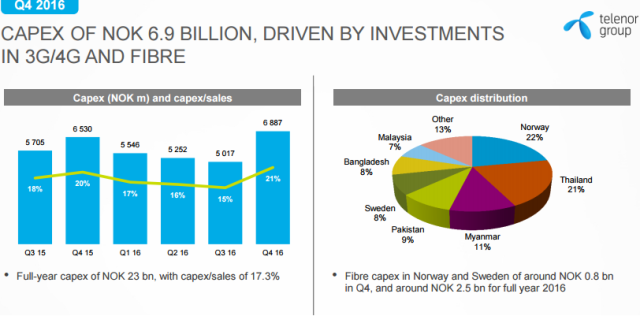
Telecom operator Grameenphone will show an innovative solution for enhancing mobile coverage in residential areas with Huawei – at the Mobile World Congress (MWC 2017).
ALSO READ: Mobile World Congress 2017
The radio network coverage solution features centralized management and distributed deployment. Remote units, master units, and baseband processing units are part of the architecture of mobile coverage solution from Huawei.
The mobile coverage solution, using optoelectronic composite cabling, allows for data transmission and power supply over a single cable, simplifying project engineering and installation. Mobile operators can deploy networks flexibly by using poles and walls in residential areas.
Grameenphone Head of Network Planning Munir Hasan said that “the VillaRadio solution has been an innovative solution born out of necessity in high population density cities like Dhaka that requires multipronged solution approach.”
 Telecom operators can provision services for buildings up to 50 m high. Because BBU sharing is enabled with macro base stations, telecoms can use existing resources for network deployment to lower network construction cost.
Telecom operators can provision services for buildings up to 50 m high. Because BBU sharing is enabled with macro base stations, telecoms can use existing resources for network deployment to lower network construction cost.
City like Dhaka relies on macro base stations for coverage improvement because building spacing is, on average terms, two to five meters.
On live networks, the distance between macro base stations is mostly below 300 m, ruling out the possibility of densifying base stations to improve the coverage. Besides, the coverage ratio of the traditional distributed antenna system, or DAS, is less than 1 percent in this country due to the high cost structure associated with this.
 Telecom operators can deploy VillaRadio in densely populated residential areas for immediate in-depth coverage improvement, addressing the concerns for challenging site acquisition and network coverage in the construction-diversified areas.
Telecom operators can deploy VillaRadio in densely populated residential areas for immediate in-depth coverage improvement, addressing the concerns for challenging site acquisition and network coverage in the construction-diversified areas.
VillaRadio solution is supporting Grameenphone to achieve coverage upgrade in residential areas, contributing to improved coverage and throughput. Grameenphone is expecting that subscriber complaints are also likely to reduce.
The VillaRadio technologies include dynamic cell splitting, high-order modulation (256QAM), and carrier aggregation. Telecom operators can use these technologies to achieve capacity expansion on live networks through software upgrade.
This solution uses distributed architecture that can suit network construction in residential areas while enabling smooth evolution to Cloud RAN. Through software upgrade and introduction of new NEs, VillaRadio enables mid-term and long-term evolution to human-to-things and things-to-things networks.
Telecom operators can use the VillaRadio solution in small-depth buildings and building blocks. The VillaRadio is compatible with LampSite, an indoor solution of Huawei, in system architecture and supports BBU sharing with the LampSite.
“Residential areas are the most important to people’s daily life. Huawei Small Cell will, as always, offer optimal network solutions for various complicated scenarios and endeavor to help customers succeed and promote the development of the MBB industry,” said Ritchie Peng, president of Huawei Small Cell Product Line.





